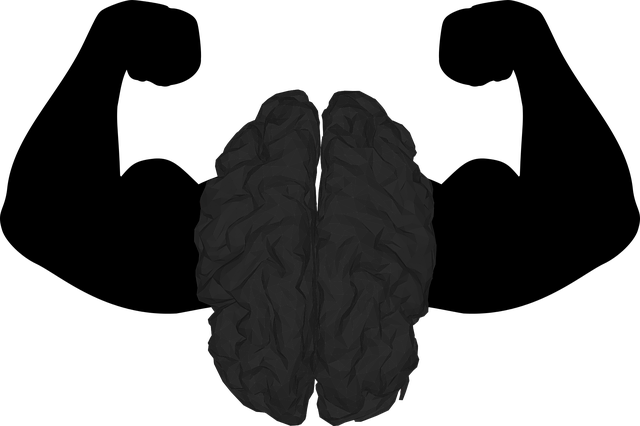Lone Tree Child Abuse Therapy (LTCAT) is dedicated to creating safe spaces for vulnerable children through comprehensive risk assessment and harm minimization. By identifying physical, emotional, and psychological dangers, including systemic issues, LTCAT develops tailored strategies that include compassion cultivation, mental health education, and mood management techniques. Their dynamic approach combines evidence-based practices like stress reduction methods, social skills training, and self-awareness exercises to promote resilience and healthy coping mechanisms in children facing abuse or neglect. Regular reviews ensure LTCAT stays at the forefront of child trauma treatment, providing an effective, adaptable program for holistic development and long-term mental health support.
In the realm of child welfare, especially within Lone Tree Child Abuse Therapy, risk assessment and harm minimization are paramount for creating safe environments. This article delves into the essential practices of understanding risk assessment as a cornerstone of safety. We explore identifying potential harms ranging from physical to emotional well-being and offer strategies for developing comprehensive minimization plans. Through implementation and continuous improvement, these measures ensure long-term safety, addressing challenges unique to Lone Tree Child Abuse Therapy.
- Understanding Risk Assessment: A Cornerstone of Safe Environments
- Identifying Potential Harms: From Physical to Emotional Well-being
- Developing a Comprehensive Minimization Plan: Strategies for Intervention
- Implementation and Continuous Improvement: Ensuring Long-Term Safety in Lone Tree Child Abuse Therapy
Understanding Risk Assessment: A Cornerstone of Safe Environments

Risk assessment is a fundamental process in creating safe and supportive environments, especially in fields like child therapy. At Lone Tree Child Abuse Therapy, we recognize that understanding risks and their potential impact is crucial to delivering effective care. By meticulously evaluating various factors, we can identify hazards and develop strategies to mitigate them, ensuring a secure atmosphere for our young clients.
This process involves analyzing the unique dynamics of each case, considering both external and internal variables. Compassion cultivation practices, mental health education programs design, and emotional well-being promotion techniques are integral parts of our risk assessment strategy. We believe that addressing risks proactively contributes to positive outcomes, empowering individuals to navigate challenges with resilience and fostering a culture of safety and support.
Identifying Potential Harms: From Physical to Emotional Well-being

Identifying potential harms is a crucial step in risk assessment and harm minimization planning. This process encompasses not only physical dangers but also a wide spectrum of emotional and psychological risks, especially when considering vulnerable populations like children. In Lone Tree Child Abuse Therapy settings, professionals are trained to recognize various forms of harm, from physical abuse and neglect to emotional manipulation and trauma. Each type of harm carries its own set of complexities and requires tailored interventions to support recovery and enhance resilience.
The scope of this identification goes beyond individual experiences to include systemic issues that contribute to child well-being. Public Awareness Campaigns Development and Mental Health Education Programs Design can play pivotal roles in fostering a culture of care and understanding. By educating communities and promoting open dialogue, these initiatives help in early detection and intervention, thereby minimizing the potential for harm and building resilience among children and families.
Developing a Comprehensive Minimization Plan: Strategies for Intervention

Developing a comprehensive harm minimization plan is an essential step in preventing and addressing potential risks within vulnerable populations, such as children facing abuse or neglect. At Lone Tree Child Abuse Therapy, we believe that tailored interventions are key to fostering resilience and well-being. One effective strategy involves implementing Mood Management techniques, teaching children healthy coping mechanisms to regulate their emotions and reduce the impact of traumatic experiences.
Additionally, incorporating Stress Reduction Methods can help individuals develop a sense of calm and control over their lives. Social Skills Training is another powerful tool; by enhancing communication and interpersonal abilities, we empower young people to seek support and build positive relationships, further mitigating potential harm. These interventions work in tandem to create a robust safety net, ensuring that children have the necessary tools to navigate challenging situations and promote long-term mental health.
Implementation and Continuous Improvement: Ensuring Long-Term Safety in Lone Tree Child Abuse Therapy

In Lone Tree Child Abuse Therapy, implementing robust risk assessment and harm minimization strategies is key to ensuring long-term safety for both the clients and therapists involved. Continuous improvement should be at the core of any therapy program, with regular reviews and updates based on best practices and emerging research in child trauma treatment. This dynamic approach allows for the adaptation of therapeutic methods to better suit individual client needs, incorporating evidence-based techniques such as Self-Awareness Exercises and Positive Thinking to foster resilience and healthy coping mechanisms.
Additionally, integrating Social Skills Training within the framework of risk assessment can significantly mitigate potential harm by equipping children with essential interpersonal skills. By fostering positive relationships and encouraging open communication, therapists create a supportive environment that not only minimizes risks but also promotes the holistic development of the child. Regularly assessing and refining these strategies ensures that Lone Tree Child Abuse Therapy remains effective and adaptable, ultimately contributing to the successful recovery and well-being of its young clients.
Risk assessment and harm minimization planning are vital components of creating safe environments, particularly in sensitive areas like Lone Tree Child Abuse Therapy. By understanding potential risks and implementing strategic interventions, as outlined in this article, therapists can ensure a comprehensive approach to protecting clients’ well-being. Continuous improvement through regular review and adaptation is key to sustaining a secure therapeutic space, enabling positive outcomes for those who seek help.














